Dwarf Planets: Definition, Sizes, Distance, Order, Difference
Dwarf planets are small celestial objects orbiting the Sun that meet specific criteria. The International Astronomical Union (IAU) defines dwarf planets as bodies that orbit the Sun, have sufficient mass for hydrostatic equilibrium, and fail to clear their orbital neighborhoods. Five officially recognized dwarf planets exist in our solar system: Ceres, Pluto, Haumea, Makemake, and Eris. Pluto is the largest dwarf planet with a diameter of approximately 2,374 kilometers. Eris is the farthest dwarf planet from the Sun, orbiting at an average distance of 96 astronomical units. The order of dwarf planets from largest to smallest is Pluto, Eris, Haumea, Makemake, and Ceres. Dwarf planets differ from planets in their inability to clear their orbital paths and their smaller size. Planets dominate their orbits gravitationally, while dwarf planets coexist with other objects in their orbital zones.
What is a dwarf planet?
Dwarf planet is a small, rounded celestial object that orbits the Sun but lacks gravitational dominance in its orbital zone. International Astronomical Union (IAU) sets three criteria for dwarf planets: Sun-orbiting, sufficient mass for hydrostatic equilibrium shape, and insufficient mass to clear its orbital neighborhood. IAU recognizes five official dwarf planets in our solar system: Ceres, Pluto, Haumea, Makemake, and Eris. Pluto exemplifies a dwarf planet with its rounded shape and orbit overlapping Neptune’s, demonstrating its inability to clear its orbital path. Dwarf planets are distinct from classical planets due to their failure to meet the third criterion of orbital clearing, as established by the IAU’s 2006 definition.
Dwarf planets occupy a unique category in planetary science, separate from planets, asteroids, and comets. Pluto serves as the prototype dwarf planet, reclassified from planet status in 2006. Other recognized dwarf planets include Eris, Haumea, and Makemake. Dwarf planets have highly eccentric orbits overlapping with other objects like asteroids and comets.
Dwarf planets are smaller than planets but larger than asteroids. Pluto has a diameter of approximately 2,374 kilometers, while Eris measures about 2,326 kilometers across. Many dwarf planets possess natural satellites orbiting them. Pluto’s dwarf planet system includes five known satellites: Charon, Nix, Hydra, Kerberos, and Styx. Charon, the largest satellite, has a diameter of 1,208 kilometers and orbits Pluto at a distance of about 12,000 kilometers.
Dwarf planet systems offer insights into solar system formation and evolution. The presence of satellites provides valuable information about dwarf planet composition and structure. Dwarf planets interact with nearby objects in their orbital neighborhoods, contributing to the diversity of the broader solar system.
What are the five dwarf planets in our solar system?
There are five recognized dwarf planets in our solar system. They are listed below.
- Ceres
- Pluto
- Haumea
- Makemake
- Eris
1. Ceres
Ceres is the largest object in the asteroid belt and the only dwarf planet in the inner Solar System. The International Astronomical Union recognizes Ceres as one of five dwarf planets. Ceres orbits between Mars and Jupiter in the asteroid belt, completing one orbit around the Sun every 4.6 Earth years.
Ceres was originally classified as a planet upon its discovery in 1801 by Giuseppe Piazzi. Ceres was later reclassified as an asteroid and is now officially designated as a dwarf planet. Ceres has a diameter of about 950 km, making it the smallest of the known dwarf planets. Ceres is composed of rock and ice, containing approximately 25% water ice by mass. Ceres has a surface composed of water ice and darker organic material, with craters, mountains, and a possible ice volcano. Ceres orbits at an average distance of 413 million kilometers from the Sun, with a nearly circular orbit ranging from 2.88 AU to 2.98 AU.
2. Pluto
Pluto is a dwarf planet located in the Kuiper Belt beyond Neptune’s orbit. The International Astronomical Union (IAU) classified Pluto as a dwarf planet in 2006. Pluto has a diameter of approximately 2,374 kilometers, making it the largest dwarf planet in the solar system. The Pluto system includes five known moons: Charon, Styx, Nix, Kerberos, and Hydra. Charon comprises about half of the Pluto-Charon system’s mass.
Pluto orbits the Sun at an average distance of 39.5 astronomical units. Pluto’s orbit is highly eccentric, with its closest approach to the Sun at 29.7 AU and its farthest distance at 49.3 AU. Pluto’s orbit takes approximately 248 Earth years to complete. Pluto’s surface temperature is extremely cold, averaging around -233°C. Pluto receives only about 1/9th of 1% of Earth’s sunlight due to its distance from the Sun.
Pluto’s surface features include mountains, valleys, and evidence of recent geological activity. Pluto’s surface is highly reflective and composed primarily of nitrogen ice. Pluto has a thin atmosphere composed mostly of nitrogen gas, which freezes and thaws as it orbits the Sun. Pluto experiences extreme variations in temperature and sunlight throughout its year due to its highly inclined axis.
Pluto was previously considered the ninth planet in our solar system until its reclassification in 2006. The IAU definition requires dwarf planets to orbit the Sun, be rounded by self-gravity, and not clear their orbital neighborhood. Pluto meets these criteria for dwarf planet classification. Astronomers now classify Pluto as a dwarf planet, plutoid, and Kuiper Belt object. The scientific community widely accepts Pluto’s dwarf planet status, although debates continue. Researchers study the Pluto system’s composition, geology, and potential subsurface ocean to further understand the outer solar system.
3. Haumea
Haumea is a dwarf planet located in the Kuiper Belt beyond Neptune’s orbit. The International Astronomical Union classified Haumea as a dwarf planet due to its size and orbital characteristics. Haumea has a unique, elongated shape resembling a rugby ball, likely caused by its rapid rotation. The dwarf planet measures approximately 1,960 kilometers in diameter, making it smaller than Pluto.
Haumea rotates exceptionally fast, completing one rotation every 3.9 hours. This rotation period is one of the fastest among known dwarf planets. Haumea orbits the Sun at an average distance of 28.2 astronomical units. The orbit of Haumea is highly eccentric, taking about 284 Earth years to complete one revolution around the Sun.
Astronomers discovered Haumea on December 17, 2004, at the Palomar Observatory in California. The discovery team identified Haumea as a trans-Neptunian object, orbiting the Sun beyond Neptune. Haumea’s classification as a dwarf planet followed later, recognizing it as one of the largest known objects in the Kuiper Belt.
Haumea has two known moons, Hi’iaka and Namaka, discovered in 2005. These moons orbit Haumea within the Kuiper Belt, a region containing numerous icy bodies and small celestial objects. Haumea’s surface consists primarily of water ice with darker organic material. The dwarf planet likely possesses a very thin atmosphere, contributing to the ongoing scientific interest in its composition and behavior.
4. Makemake
Makemake is a dwarf planet located in the Kuiper Belt. Makemake orbits the Sun at an average distance of 45.8 astronomical units, completing one orbit in approximately 310 Earth years. Makemake has a diameter of approximately 1,430 kilometers (890 miles), making it smaller than Pluto. Makemake’s mass is estimated at 3.3 x 10^21 kilograms, about 1/10th the mass of Pluto.
Makemake’s surface is composed primarily of frozen methane and ethane ices. A layer of tholins, complex organic molecules, may cover parts of its surface. Makemake shares dwarf planet status with Pluto, Eris, Ceres, and Haumea, forming the group of five officially recognized dwarf planets in our solar system.
Mike Brown and his team discovered Makemake on March 31, 2005, at the Palomar Observatory. Astronomers initially considered Makemake as a possible “tenth planet” in our solar system. The International Astronomical Union reclassified Makemake as a dwarf planet in 2006, along with Pluto and other similar objects.
Makemake shares similarities with other Kuiper Belt objects. Makemake and Pluto are both dwarf planets located in the Kuiper Belt, but Makemake has a more eccentric orbit. Makemake has a more stable orbit compared to Sedna, another distant object in the outer solar system. Makemake shares size and composition similarities with Orcus, another Kuiper Belt object.
5. Eris
Eris is a dwarf planet located in the outer Solar System. Eris orbits the Sun in the scattered disc region beyond Neptune. Eris has a highly eccentric orbit, ranging from 37.8 to 95.6 astronomical units from the Sun. Eris takes 557 Earth years to complete one orbit around the Sun.
Eris is the most massive dwarf planet in our solar system. Eris has a diameter of approximately 2,326 kilometers and a mass of about 0.233 Earth masses. Eris has a dense rocky core surrounded by an icy mantle. Eris surface is composed of frozen methane and nitrogen ices. Eris completes one rotation on its axis in 25.9 hours.
Eris has one known moon called Dysnomia. Dysnomia orbits Eris at a distance of 37,000 kilometers. Eris was discovered on January 5, 2005, at Palomar Observatory by Mike Brown and his team. Eris discovery prompted the reclassification of Pluto in 2006. The International Astronomical Union created the dwarf planet category in 2006 and officially classified Eris as a dwarf planet. Eris name comes from the Greek goddess of strife and discord.
What is the biggest dwarf planet in our solar system?
Pluto is the largest dwarf planet in our solar system. Pluto’s diameter measures approximately 2,374 kilometers. Eris, the second-largest dwarf planet, has a diameter of 2,326 km. Pluto resides in the Kuiper Belt beyond Neptune. Pluto has five moons: Charon, Hydra, Nix, Kerberos, and Styx.
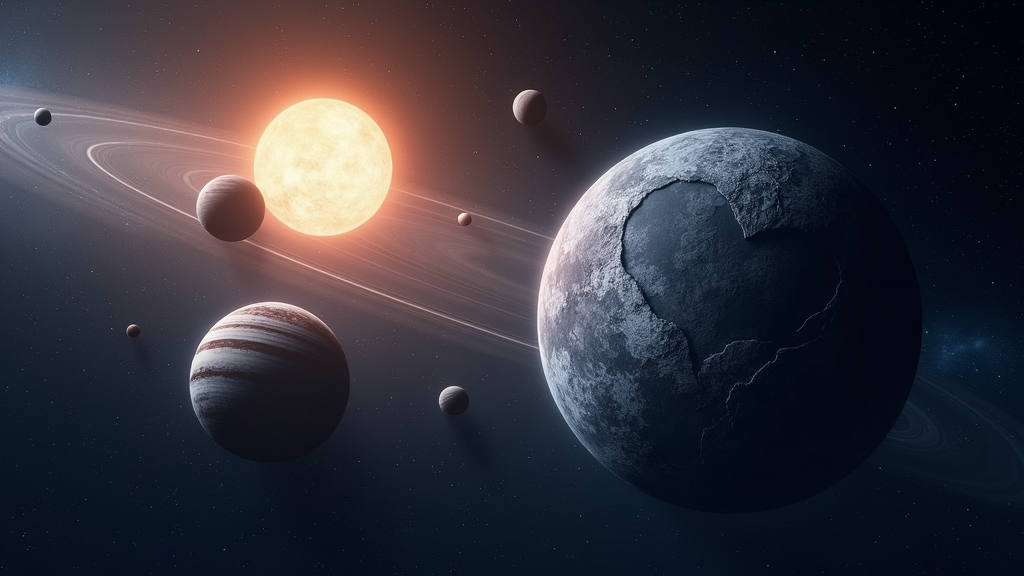
What is the smallest dwarf planet in our solar system?
Hygiea is the smallest dwarf planet in our solar system. Hygiea has a diameter of approximately 434 kilometers (270 miles). Pierre Vernazza’s 2019 study confirmed Hygiea’s dwarf planet status using ESA’s Gaia spacecraft and the Very Large Telescope. Hygiea is smaller than Ceres, previously considered the smallest dwarf planet at 946 kilometers (588 miles) in diameter.
Ceres has an equatorial diameter of 599 miles (964 kilometers). Its average diameter measures 950 kilometers due to its non-perfect spherical shape. Ceres is located in the asteroid belt between Mars and Jupiter.
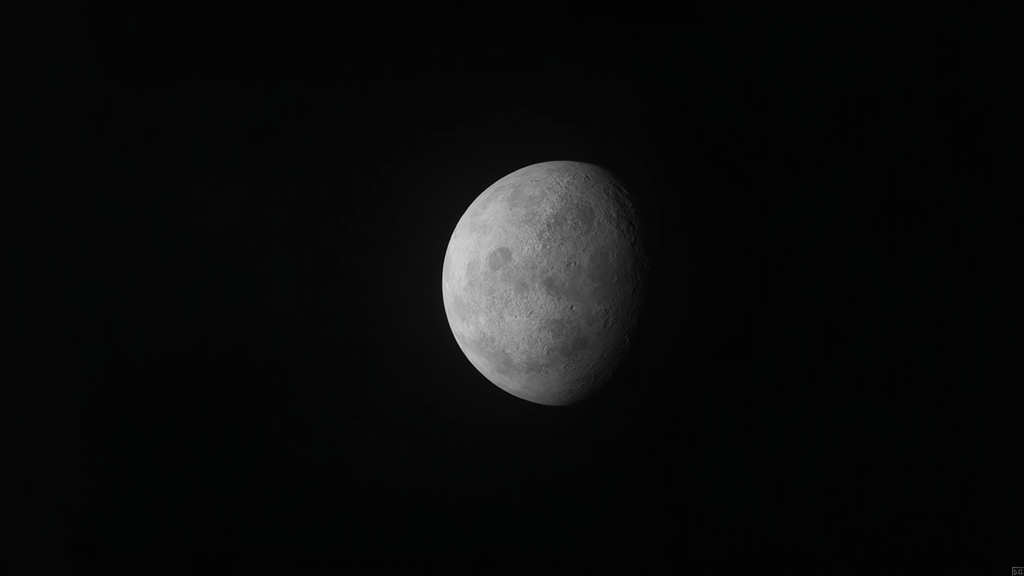
Hygiea has a diameter of 430 kilometers, significantly smaller than Ceres. Astronomers discovered Hygiea in 1849 and initially classified it as an asteroid. Recent studies suggest Hygiea may be reclassified as a dwarf planet, potentially making it the new smallest dwarf planet in our solar system.
What is the farthest dwarf planet from the sun?
Eris is the farthest dwarf planet from the Sun. Eris orbits at an average distance of 96 astronomical units, reaching up to 109 astronomical units at its farthest point. Pluto, Makemake, and Haumea are other dwarf planets with highly eccentric orbits. Eris maintains its position as the most distant dwarf planet in our solar system.
Pluto, another well-known dwarf planet, has a more moderate orbit compared to Eris. Pluto’s orbit reaches approximately 49 AU from the Sun at its farthest point. Pluto comes as close as 30 AU to the Sun at its nearest approach. Eris maintains a significantly greater distance from the Sun than Pluto throughout its orbital path.
Which dwarf planet is closest to the sun?
Ceres is the closest dwarf planet to the Sun. Ceres orbits at 257 million miles (414 million kilometers) from the Sun. Ceres resides in the inner asteroid belt between Mars and Jupiter. Ceres maintains an average distance of 413 million kilometers from the Sun, significantly closer than other dwarf planets.
Hygiea is the second closest dwarf planet candidate to the Sun. Hygiea is located in the asteroid belt. Hygiea has a perihelion of about 382 million kilometers (237 million miles) or 2.56 AU. Hygiea is approximately 270 miles (434 km) in diameter. Hygiea is not officially classified as a dwarf planet. Hygiea does not meet the International Astronomical Union’s criteria for a dwarf planet due to insufficient mass to assume a hydrostatic equilibrium shape.
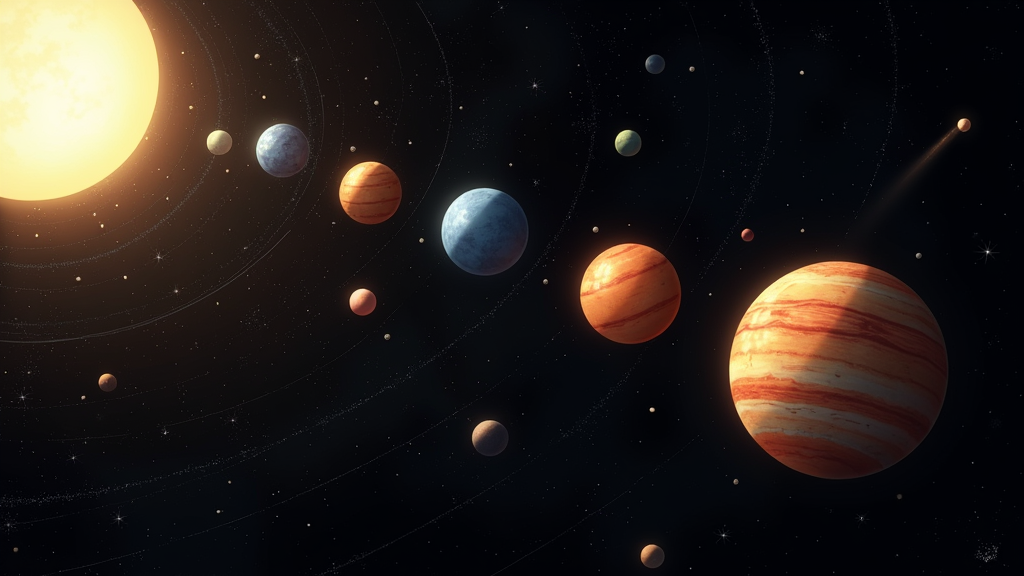
Do dwarf planets orbit the sun?
Dwarf planets orbit the Sun as celestial bodies. International Astronomical Union defines dwarf planets as objects orbiting the Sun with enough mass for a nearly round shape due to gravity. Dwarf planets must not have cleared their orbital neighborhood. Pluto exemplifies a dwarf planet with spherical shape orbiting the Sun at tens to hundreds of astronomical units.
Dwarf planets have longer orbital periods than inner planets. Pluto takes approximately 248 Earth years to complete one orbit around the Sun. Eris has an even longer orbital period of about 557 Earth years. Dwarf planets’ orbits have varied inclinations and eccentricities. Pluto’s orbit is tilted at an angle of 17.15° relative to the ecliptic plane, with an orbital eccentricity of 0.25. Eris has a more extreme inclination of 44.04° and an eccentricity of 0.44.
Dwarf planets are primarily located in the Kuiper Belt and scattered disc regions. Pluto, Haumea, Makemake, and Eris reside in these outer areas of the solar system. Dwarf planets orbit the Sun at average distances ranging from 30 to 50 astronomical units (AU). Pluto’s distance from the Sun varies between 29.7 AU and 49.3 AU due to its elliptical orbit. Some dwarf planets are found in the asteroid belt. Ceres orbits the Sun at an average distance of 2.88 AU, between the orbits of Mars and Jupiter. Potential dwarf planets exist in the outer solar system beyond the Kuiper Belt. These objects follow scattered disc orbits, taking them far beyond the known boundaries of our solar system.
What is the closest dwarf planet to Earth?
Ceres is the closest dwarf planet to Earth. Ceres orbits in the asteroid belt between Mars and Jupiter, approximately 413 million kilometers from Earth. Ceres is the largest object in the asteroid belt, measuring 946 kilometers in diameter. The Dawn spacecraft orbited Ceres from 2015 to 2016, providing insights into its composition and geology.
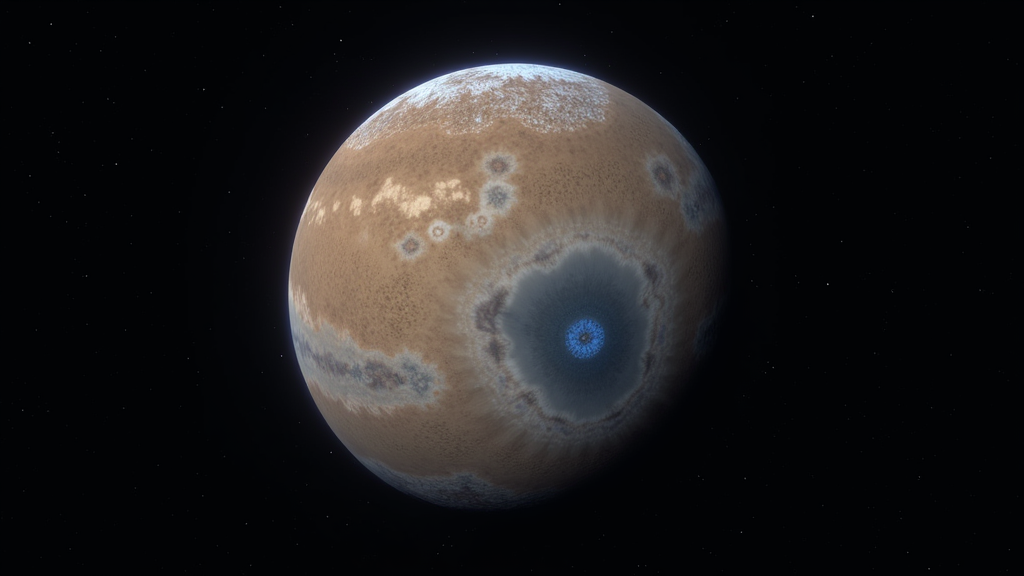
Hygiea has a diameter of approximately 950 kilometers. Hygiea’s orbit is more eccentric than Ceres’. Hygiea’s closest point to Earth is 380 million kilometers. Scientists classify both Ceres and Hygiea as dwarf planets. Ceres remains the most widely accepted closest dwarf planet to Earth. Ceres is a fascinating target for scientific study and exploration due to its proximity.
How many dwarf planets are in the solar system?
Five dwarf planets are currently officially recognized in the solar system. International Astronomical Union (IAU) classifies Ceres, Pluto, Eris, Haumea, and Makemake as dwarf planets. Scientists consider several other celestial bodies as dwarf planet candidates. New discoveries may alter the classification of dwarf planets in the future.
Dwarf planets are celestial bodies with rounded shapes due to their gravity. Dwarf planets have not cleared their orbits of other objects and have highly eccentric orbits. Dwarf planet orbits range from 29 astronomical units (AU) to 936 AU from the Sun. The IAU introduced dwarf planets as a new category in 2006, redefining the term “planet” to reflect current understanding.
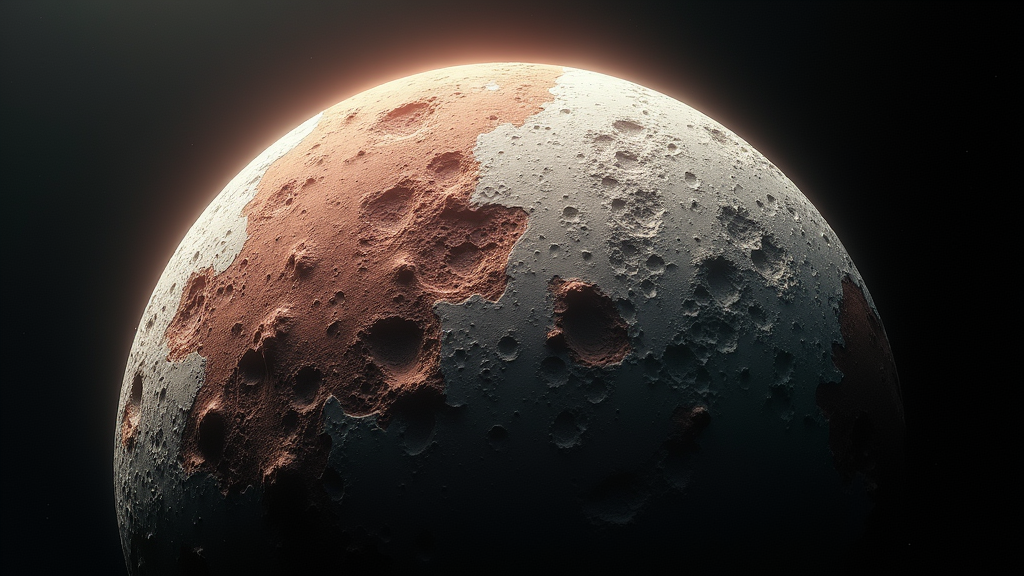
Older information classified only 3 objects as dwarf planets: Pluto, Eris, and Ceres. Astronomers discovered objects like Quaoar and Sedna in the early 2000s, which are large enough to be rounded by their gravity but not massive enough to clear their orbits. The exact number of dwarf planets remains unknown. Astronomers continue to discover and verify potential dwarf planets in the solar system.
How many dwarf planets are in the Kuiper belt?
Five officially recognized dwarf planets exist in the Kuiper Belt: Pluto, Eris, Haumea, Makemake, and Quaoar. Scientists consider additional candidates like Sedna and Orcus for dwarf planet status. Ongoing surveys and missions aim to reveal more objects, potentially increasing the number of recognized dwarf planets in the future.
Hundreds of dwarf planet candidates exist in the Kuiper Belt. Astronomers estimate a maximum of 200 potential dwarf planets in this region. Thousands of objects beyond Neptune await discovery and classification. The Kuiper Belt is a vast reservoir of small, icy bodies extending from 30 to 55 astronomical units from the Sun. Kuiper Belt Objects (KBOs) are large enough to have a rounded shape due to their own gravity but not massive enough to clear their orbits of other objects.
What is the order of dwarf planets from largest to smallest?
The order of dwarf planets from largest to smallest is listed below.
- Pluto: approximately 2,374 kilometers in diameter
- Eris: approximately 2,326 kilometers in diameter
- Makemake: approximately 1,430 kilometers in diameter
- Haumea: approximately 1,960 kilometers in diameter
- Ceres: approximately 946 kilometers in diameter
Dwarf planets order from largest to smallest: Pluto, Eris, Haumea, Makemake, Ceres. Pluto has the largest diameter at 2,374 km. Eris follows at 2,326 km. Haumea measures 1,960 x 1,518 x 996 km. Makemake’s dimensions are 1,430 x 1,420 km. Ceres is smallest at 946 km diameter. IAU officially recognized these five dwarf planets in 2006.
What is the order of dwarf planets by distance from the sun?
The order of dwarf planets by distance from the sun is listed below.
- Ceres: 2.88 AU or 413 million kilometers
- Pluto: 39.5 AU or 5.9 billion kilometers
- Haumea: 43.1 AU or 6.4 billion kilometers
- Makemake: 45.8 AU or 6.8 billion kilometers
- Eris: 67.8 AU or 9.6 billion kilometers
Dwarf planets orbit the Sun at varying distances. Ceres orbits closest at 413,700,000 km. Pluto follows at 5,906,000,000 km. Haumea orbits at 6,450,000,000 km. Makemake’s distance is 6,850,000,000 km. Eris orbits farthest at 9,700,000,000 km. Dwarf planets have elliptical orbits. Orbital distances vary over time.
Why is pluto considered a dwarf planet?
Pluto fails to clear its neighboring region of objects, violating a key International Astronomical Union (IAU) criterion for planet status. IAU downgraded Pluto to dwarf planet in 2006. Pluto meets other planet criteria – orbiting the Sun and having sufficient mass for hydrostatic equilibrium. Pluto’s orbit overlaps with Neptune’s and Kuiper Belt objects.
Pluto lacks gravitational dominance to clear its orbital path. Pluto’s orbit overlaps with Neptune’s orbit, and other Kuiper Belt objects cross Pluto’s orbit. Pluto has insufficient mass to clear neighboring objects, with a mass of approximately 1.31 x 10^22 kilograms compared to Earth’s 5.97 x 10^24 kilograms. The discovery of similar Kuiper Belt objects like Eris and Makemake contributed to Pluto’s reclassification. Eris, larger than Pluto, was discovered in 2005 and raised questions about planet criteria.
Pluto’s reclassification resulted from increased understanding of the Kuiper Belt. The IAU redefined the term “planet” and reclassified other Kuiper Belt objects as dwarf planets. Pluto does not meet the full planet definition established by the IAU due to its small size and inability to clear its orbit. Pluto became a dwarf planet along with other small celestial bodies that orbit the Sun and are spherical but have not cleared their orbital neighborhoods.
When did pluto become a dwarf planet?
The International Astronomical Union (IAU) reclassified Pluto as a dwarf planet on August 24, 2006. Pluto’s demotion reduced the number of planets in our solar system from nine to eight. The reclassification sparked controversy among astronomers and the public. Some argued Pluto should retain its planet status.
Pluto’s status changed due to evolving understanding of the solar system. The IAU established new criteria for planetary classification in 2006. Pluto failed to meet one of the three criteria set by the IAU. Pluto does not clear its orbital neighborhood of other objects. Pluto’s orbit overlaps with Neptune’s and other Kuiper Belt objects.
Pluto stopped being considered a full planet in 2006. Pluto has been classified as a dwarf planet since the IAU reclassification. Pluto’s reclassification significantly altered our understanding of the solar system. Pluto remains an important object of study despite its reclassification.
Why is the asteroid ceres now considered to be a dwarf planet?
Ceres was upgraded from asteroid to dwarf planet in 2006. Scientists recognized Ceres’ characteristics met dwarf planet criteria. Ceres is significantly bigger than other asteroid belt objects, with a 946-kilometer diameter. Ceres’ substantial mass affects its shape. Gravity pulled Ceres into a rounded form, distinguishing it from irregular asteroids.
Ceres is bigger and different from its neighbors in the asteroid belt. Ceres has the largest size in the asteroid belt. Ceres’ mass of approximately 9.44 x 10^23 kilograms sets it apart from other asteroids. Ceres has an equatorial radius of approximately 479 km and a polar radius of approximately 446 km. Ceres has surface features suggesting a complex geological history. Ceres maintains a relatively constant distance from the Sun. Ceres has a surface temperature of around -38°C.
What is the difference between a dwarf planet and a planet?
Dwarf planets fail to clear their orbital neighborhoods, unlike planets. Dwarf planets are smaller, less than 2,374 km in diameter. Dwarf planets reside in the outer solar system, beyond Neptune. Eris, a dwarf planet, orbits at 96 AU. Dwarf planets have more eccentric orbits and irregular shapes. Planets dominate gravitationally in their orbits.
The ability to clear orbit is a crucial characteristic that sets planets apart from dwarf planets. Planets dominate their orbits and maintain stable systems of moons and celestial bodies. Dwarf planets fail to clear their orbital paths and coexist with other objects in their orbital zones. Dominance in orbit is another key factor distinguishing planets from dwarf planets. Planets exert control over their orbital regions, while dwarf planets lack dominance and share orbits with other celestial bodies.
Dwarf planets have highly eccentric and inclined orbits, influenced gravitationally by larger bodies. Dwarf planets lack the atmospheric and geological activity typical of planets. Dwarf planets are present in the outer reaches of the solar system, with many existing beyond Neptune’s orbit in regions like the Kuiper Belt and asteroid belt.
Why are dwarf planets considered planets despite being smaller than some moons?
Dwarf planets are considered planets despite being smaller than some moons. Planets are defined as celestial bodies orbiting the Sun with sufficient mass for hydrostatic equilibrium. Dwarf planets meet these criteria. Pluto and Eris exemplify dwarf planets, orbiting the Sun and rounded by gravity. Size does not disqualify them from planetary status.
Key characteristics define dwarf planets as distinct celestial bodies. Dwarf planets have insufficient mass to clear their orbital paths, differentiating them from major planets. Dwarf planets are planetary-mass objects in their own right, possessing enough mass to achieve a nearly round shape. Dwarf planets size ranges from 946 kilometers (Ceres) to 2,374 kilometers (Pluto) in diameter, placing them in a category between major planets and smaller solar system objects.
Moons and dwarf planets differ in fundamental ways despite size similarities. Moons orbit planets, while dwarf planets orbit the Sun directly. Size is not the primary factor in classifying celestial bodies as planets or dwarf planets. Orbital characteristics and mass play crucial roles in determining the status of these objects. Dwarf planets are considered distinct from both planets and moons, occupying a unique classification in our solar system.
Which characteristic is present in a planet but not in a dwarf planet?
Orbit cleared of other objects is the characteristic present in a planet but not in a dwarf planet. Planets gravitationally dominate their orbital zones, removing or ejecting other objects through collisions or gravitational interactions. Earth, Jupiter, and Saturn exemplify planets. Pluto, Eris, and Ceres are dwarf planets lacking this characteristic.
The International Astronomical Union established a planet definition in 2006. The IAU definition states planets must have “an orbit cleared of other objects” as a crucial criterion. Planets are gravitationally dominant in their orbital zones. Planets remove or eject other objects through their strong gravitational influence. Dwarf planets fail to meet this third criterion of orbital clearing.
What are dwarf planets made of?
Dwarf planets are made of a mix of rocky and icy materials. Rocky components include silicate rocks like olivine and pyroxene. Icy components consist of water ice, methane ice, and ammonia ice. Liquid water exists beneath some dwarf planets’ surfaces. Composition varies based on distance from the Sun. M. E. Brown’s 2019 study detailed dwarf planet compositions.
Liquid water potentially exists beneath the surfaces of some dwarf planets. Ceres likely harbors a subsurface ocean containing liquid water. Pluto has a subsurface ocean in contact with its rocky core. Distant dwarf planets like Haumea lack liquid water due to extremely low temperatures.
Dwarf planets represent a mix of rocky and icy materials from solar system formation. Pluto is composed of 70% rock and 30% ice by mass. Eris consists of 60% rock and 40% ice. Ceres contains 60% rock and 40% ice. The surfaces of dwarf planets contain various materials. Water ice is present on Pluto, Eris, and other Kuiper Belt Objects. Methane and ammonia ices exist on Pluto’s surface. Ceres has a surface dominated by water ice and darker organic material.

